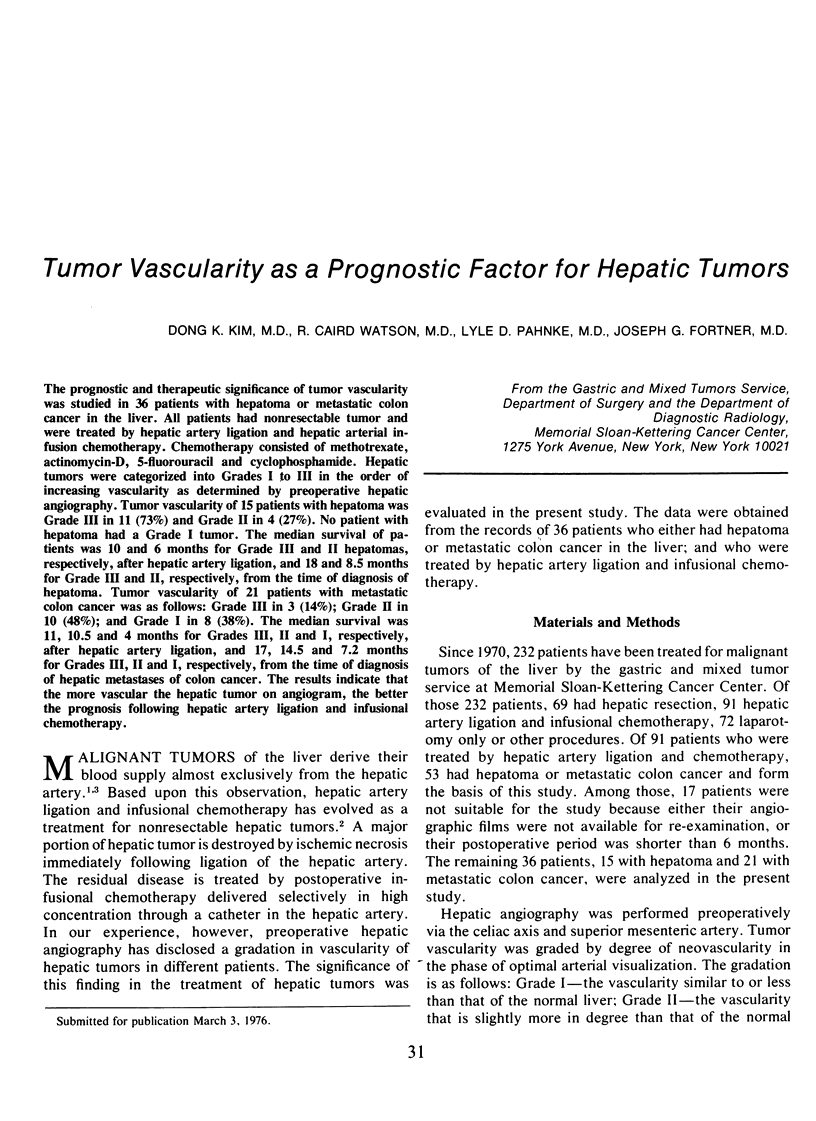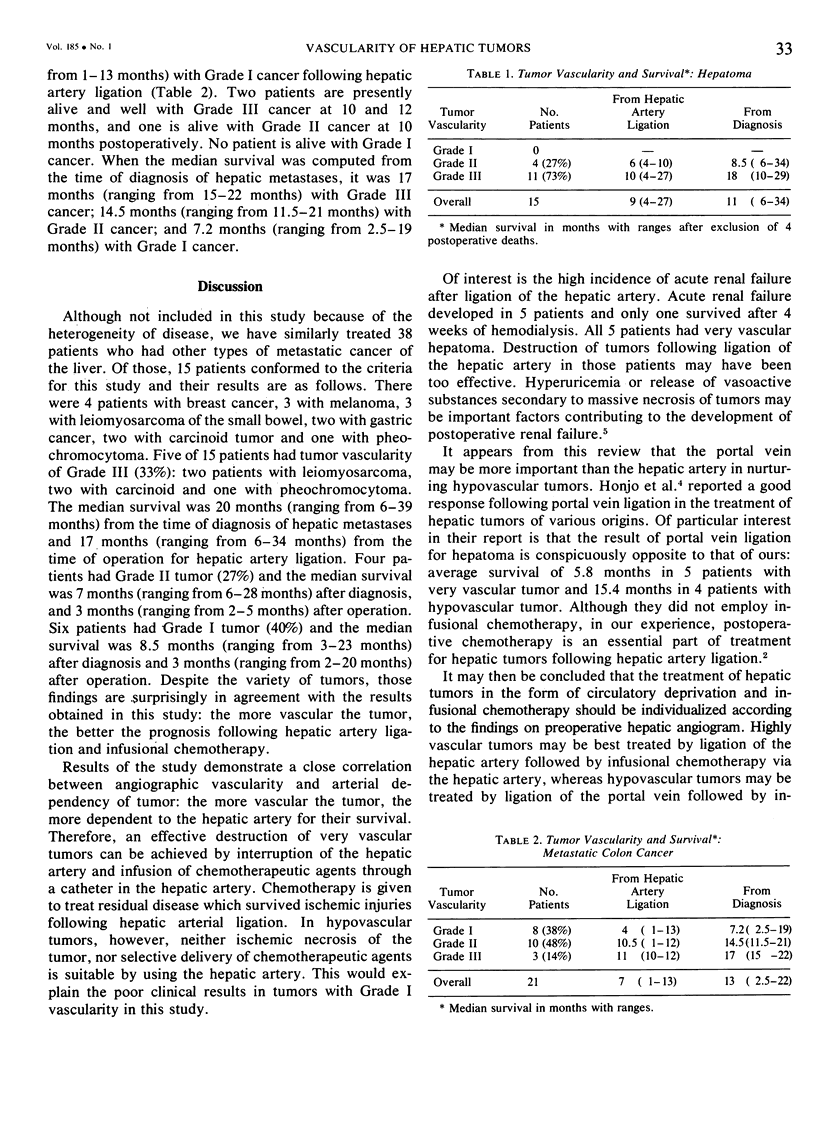Abstract
The prognostic and therapeutic significance of tumor vascularity was studied in 36 patients with hepatoma or metastatic colon cancer in the liver. All patients had nonresectable tumor and were treated by hepatic artery ligation and hepatic arterial infusion chemotherapy. Chemotherapy consisted of methotrexate, actinomycin-D, 5-fluorouracil and cyclophosphamide. Hepatic tumors were categorized into Grades I to III in the order of increasing vascularity as determined by preoperative hepatic angiography. Tumor vascularity of 15 patients with hepatoma was Grade III in 11 (73%) and Grade II in 4 (27%). No patient with hepatoma had a Grade I tumor. The median survival of patients was 10 and 6 months for Grade III and II hepatomas, respectively, after hepatic artery ligation, and 18 and 8.5 months for Grade III and II, respectively, from the time of diagnosis of hepatoma. Tumor vascularity of 21 patients with metastatic colon cancer was as follows: Grade III in 3 (14%); Grade II in 10 (48%); and Grade I in 8 (38%). The median survival was 11, 10.5 and 4 months for Grades III, II and I, respectively, after hepatic artery ligation, and 17, 14.5 and 7.2 months for Grades III, II and I, respectively, from the time of diagnosis of hepatic metastases of colon cancer. The results indicate that the more vascular the hepatic tumor on angiogram, the better the prognosis following hepatic artery ligation and infusional chemotherapy.
Full text
PDF



Images in this article
Selected References
These references are in PubMed. This may not be the complete list of references from this article.
- BREEDIS C., YOUNG G. The blood supply of neoplasms in the liver. Am J Pathol. 1954 Sep-Oct;30(5):969–977. [PMC free article] [PubMed] [Google Scholar]
- Fortner J. G., Mulcare R. J., Solis A., Watson R. C., Golbey R. B. Treatment of primary and secondary liver cancer by hepatic artery ligation and infusion chemotherapy. Ann Surg. 1973 Aug;178(2):162–172. doi: 10.1097/00000658-197308000-00009. [DOI] [PMC free article] [PubMed] [Google Scholar]
- Gelin L. E., Lewis D. H., Nilsson L. Liver blood flow in man during abdominal surgery. II. The effect of hepatic artery occlusion on the blood flow through metastatic tumor nodules. Acta Hepatosplenol. 1968 Jan-Feb;15(1):21–24. [PubMed] [Google Scholar]
- Kim D. K., Penneman R., Kallum B., Carrillo M., Scheiner E., Fortner J. G. Acute renal failure after ligation of the hepatic artery. Surg Gynecol Obstet. 1976 Sep;143(3):391–394. [PubMed] [Google Scholar]





